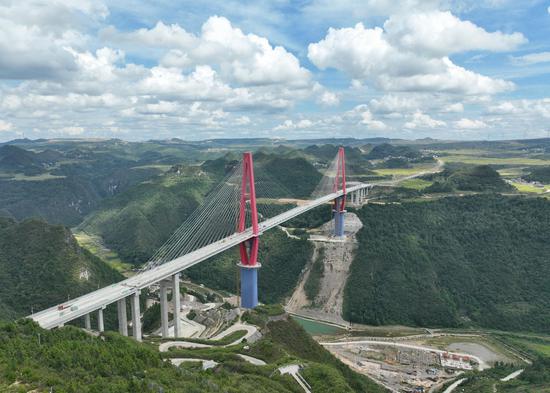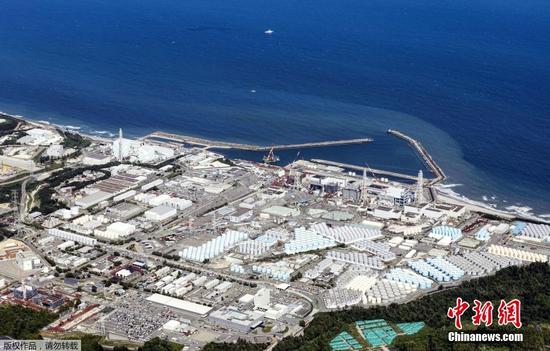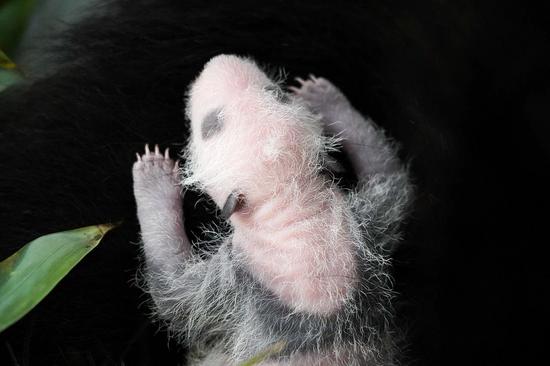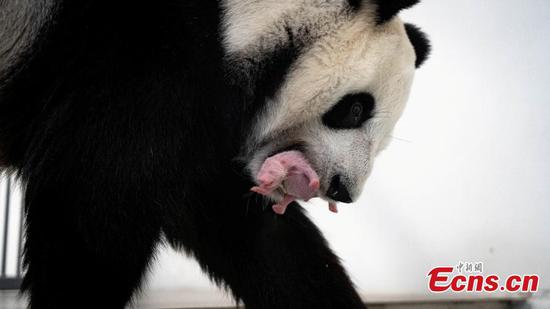About 130 million years ago, a bipedal dinosaur walked in what is now Jiecaigou, a village in Chengde, Hebei province.
Along with a second dinosaur, its fossilized remains were unearthed and restored, the Department of Natural Resources of Hebei said last week, and the discovery has provided valuable evidence for the evolution of its species — ceratosaurus.
Both of the dinosaurs were herbivorous, with one belonging to a more primitive ceratosaurus while the other a stegosaurus, the department said at a news conference on Thursday.
The ceratosaurus' fossil, measuring about 1 meter in length, was discovered from the early Cretaceous strata.
Its bones were nearly intact, revealing it to be bipedal with a little headdress structure. It fills a gap in the evolutionary history and development of the ceratosaurus, according to Zhang Fucheng, a member of China's national expert panel on paleontology and fossils.
The ceratosaurus is one of the most diverse groups within the dinosaur family. They have a wide range of species and complex morphologies, which makes studying them quite challenging, according to Zhang.
"Understanding their evolutionary pathways has always been an important issue in the field of paleovertebrates," he said.
During the early stages of evolution approximately 100 million to 170 million years ago, the primitive ceratosaurus had relatively smaller body sizes and simpler body structures. For example, they didn't have the distinctive shieldlike structures on the head that are commonly seen in their descendants, Zhang said.
But about 66 million to 100 million years ago, the simple-looking ceratosaurus transformed into massive four-legged beasts. Some of them also developed large horns or other ornamental or functional structures on their heads.
The ceratosaurus dinosaur fossil discovered in Jiecaigou came from layers dating back about 130 million years ago. It exhibits a faint structure on the head, placing it in an intermediate position during this transition.
"It is an important specimen that helps to fill the gap in the evolution of ceratosaurus dinosaurs," Zhang said.
The stegosaurus fossil, measuring about 5 meters long, has a nearly complete skeleton and skin.
It's the first time a stegosaurus fossil has been discovered in Hebei, and it is much bigger than other dinosaur fossils unearthed in the province.
The completeness of its skin could be the largest in the world, Zhang said.
"It is of great significance for us to know of the body surface characteristics and physiological functions of stegosaurus or even all dinosaurs, as well as the geographical environment and climate change of the early Cretaceous period," he said.
The fossils were first discovered in 2017, when two leg bones were found.
At present, the fossils' restoration work has been completed, according to Hebei's natural resources department. For the next step, a real-size 3D model of them will be made and related research will get underway.
"Paleontological fossil resources are extremely valuable natural heritage with significant scientific and societal value as they enable us to understand and learn about the past," said Wang Mingcai, deputy head of the department.


















































 京公网安备 11010202009201号
京公网安备 11010202009201号